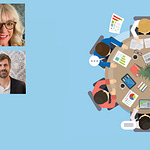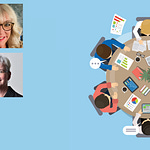In this episode, our speakers from RNLI, Shelter and Remember a Charity explored how to unlock and normalise legacy conversations across organisations, stakeholders and with supporters, and how to tailor the conversation to different audience groups.
Ali O’Neill (Legacy Engagement Manager, RNLI)
Ali is part of a six-strong Legacy Engagement team across the country. Her role as Legacy Engagement Manager for the South East sees her focusing on stewardship of approximately 200 ‘high level pledgers’ worth £70 million in pledged income. High level pledgers are identified as those pledging above the average for the RNLI i.e. 50% of their estate or £100K pecuniary gift. In addition to the pledgers she is also responsible for engaging a variety of internal stakeholders including RNLI staff, fundraising volunteers, volunteer life guards and lifeboat crew. Each of these groups requires different levels of legacy knowledge and understanding. Key to her role is making sure all the different groups are on message.
To this end the RNLI are working towards a big training piece and have been segmenting their internal audience in preparation. They’ve developed a complex matrix in order to prioritise who needs training and to identify the level of knowledge various segments require. They have narrowed it down to who needs to be:
Expert
Understand
Aware
Having identified these groups they are now looking at channels to deliver the training and a new approach to how they share legacy information and inspire and equip staff.
Tom Newton (Legacy Administration Manager, Shelter)
Tom has been working in legacies for the past decade and shared valuable insights around having legacy conversations with everyone involved in the administration process. He discusses that the key starting point is identifying the key audiences and taking the time to understand who we’re communicating with, as each person will have different needs and levels of understanding.
There’s a wider audience to be considered at this stage, including professional and lay executors, accountants, solicitors, family/friends, estate agents and funeral directors. We need to recognise that they all have their own responsibilities and it’s important to set expectations from the start, making sure we take a collaborative approach. His main point is to remember the professionals involved are humans and we need to engage with them on a personal level as well, reminding them how important they are in the process. It’s good to have a rough framework to follow, but we need to be flexible as we progress.
He discusses the current lack of innovation in commemorating everything and the importance of being more inspirational. Books of remembrance and lists of names in annual reports are good starting points, but he mentions some great examples of different approaches charities have taken to make this a positive and memorable experience for those involved. The Jewish Foundation of Manitoba create a book of life, capturing pledgers and legators and the National Trust tell stories about legacy supporters at their properties. We need to remember that we can only get those stories if we have a process of engagement established from the start.
Rob Cope (Director of Charity Development, Remember a Charity)
As part of the Remember a Charity team, Rob shared his perspective on legacy messaging and how to nudge people into legacy giving. At the moment, we can see a disconnect between the intention of leaving gifts in wills and the actual numbers of people who do it. He shares a key metric that shows just over 16% of all wills that probate include charitable gifts and the number of people who say there are happy to leave a gift in their will is increasing to 35% now.
Rob talks about how a charity’s job is to encourage all the people involved in the will writing process to open up and normalise the conversation around legacy giving. He discusses a benchmark report they had conducted which showed that the number of solicitors who have charitable giving conversation with their clients increased from half to over two-thirds in the last 5 years. Making sure solicitors, will writers and other advisors embed this conversation maximises everyone’s charity efforts and improves conversion.
He discusses residual legacy message and how there is a better joined up process as legacy admin and marketing teams are working more closely together. We need to understand it’s not just about asking, but our use of better language and education. Rob mentions a guide Remember a Charity have developed for financial advisors on best practice for charitable giving which will be released in a few weeks and will provide advisors with specific learning around this.
The final discussions with Rob centered on legacy marketing throughout the pandemic and the research carried out by them last year has shown that as long as messaging uses the right language at the right time for the relevant audience, legacies are always relevant and communications for it should still be continued. The metrics revealed that people broadly felt comfortable talking about how they can support their charities and people are thinking about end of life planning now more than ever before. We have an opportunity now as a cohort to take hold of this spike and maximise this opportunity












Share this post